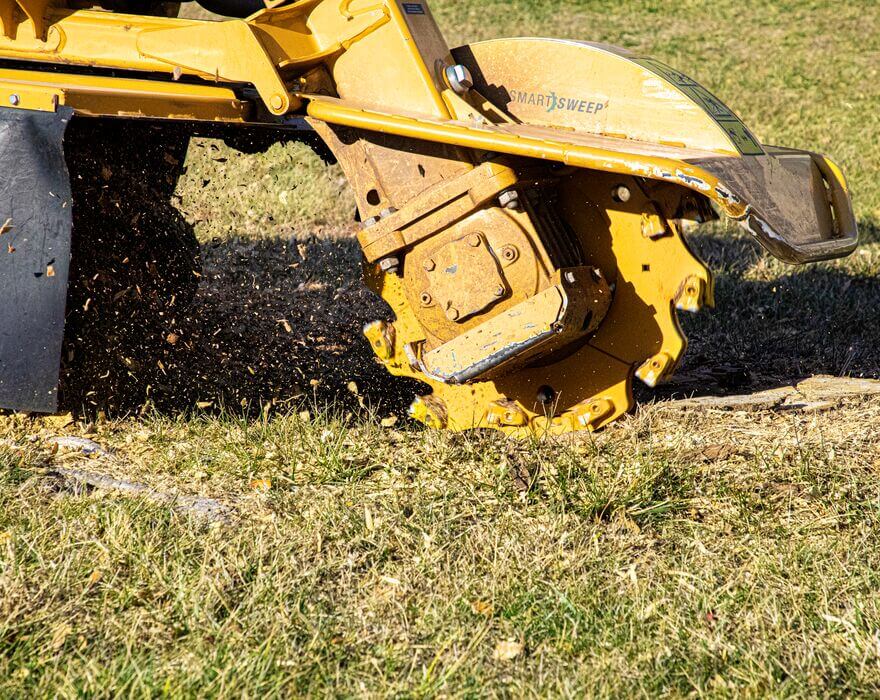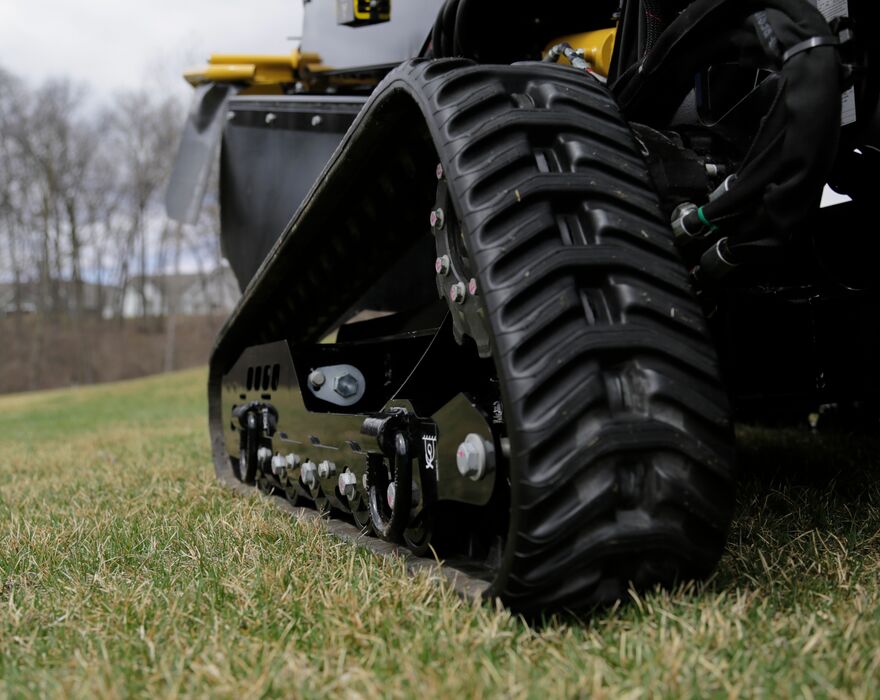Updated November 28, 2023
The options for stump cutters can seemingly be endless. The wide range in cutter wheel sizes and transportation options can be overwhelming, especially for a first-time buyer. With a variety of machines to choose from, let’s go over how to find your ideal stump cutter to keep you moving efficiently between jobsites.
Cutter wheel size
If you are looking to invest in a stump cutter, likely the first feature you will compare between models is the size of the cutter wheel. Deciding on which size is best for your operation will depend on the average size of the stumps you encounter. If you tend to see stumps on the smaller end, models like the recent addition to the Vermeer lineup — the SC48TX stump cutter — and the SC362 stump cutter can get the job done efficiently. Kyle Newendorp, product specialist for Environmental Solutions said, “Remember that even if you encounter stumps larger than expected, a smaller cutter wheel can still do the job, it may just take longer than it would if a larger cutter wheel was used.” If you consistently work with large and mature stumps, it may be better to look at a model like the SC852 stump cutter or SC1052 stump cutter, with a robust cutter wheel and high horsepower capabilities.

The key question to consider is: what size is the majority of stumps you work with? From there you can work with your local Vermeer dealer to get a better idea of what stump cutter model will work well for you, without getting a machine larger than what is necessary.
The cutter wheel is a highly wearable piece on a stump cutter, especially when taking down multiple stumps daily. Something to remember is that the bigger the cutter wheel, the more teeth there is to replace. Prioritizing maintenance helps keep the machine performing at a high level for an extended period.
Business functions
Every tree care business operates a bit differently. The process you take to determine a price for stump removal may determine which stump cutter will be a better fit for your business. Three common methods to determine that price is by the inch, by the hour or a flat rate. If you charge based on diameter or size of the stump, chances are you do not remove stumps daily. In that case, you may want a stump cutter that will fit the maximum stump diameter, and not using a machine that is larger than what you need. If you plan to charge a flat rate, having a stump cutter that can tackle a wide range of stump sizes — like the SC48TX — will offer a variety in what types of jobs you can bid on.
It is also important to look at the services your business offers, and how frequently you are removing stumps. “If you exclusively grind stumps every day and need to move between jobsites quickly, a more robust stump cutter will likely maximize efficiency and productivity. For tree care businesses that offer a wide variety of services such as land-clearing and brush chipping, a large stump cutter may not be necessary,” explained Brandon Nelson, product specialist for Environmental Solutions. Smaller models — like the SC30TX or SC292 stump cutters — tend to work well for those operators who do not remove stumps daily but would like to offer stump cutting services.
Self-propelled vs. tow-behind
When thinking of what stump cutter model will work best for you, it is important to remember how and where you will be maneuvering the machine. Stump cutters come as either self-propelled, or tow-behind. A self-propelled unit allows an operator to park the trailer, unload the stump cutter, and drive right up to the stump. With a tow-behind, operators will use a pickup truck to position the stump cutter at the correct location.
Both options have benefits and disadvantages, but the determining factor will likely be what type of jobsites you frequent. Are they constricted residential areas? Or is it more spacious, with plenty of room to back up and turn around if needed? “If you tend to work in narrow or congested areas, it might work better to stick with a model that is self-propelled, like the SC48TX stump cutter. If you typically work on more spacious jobsites that allow you to easily back up to the stump, a tow behind model such as the SC802 stump cutter could work well for you,” explained Newendorp. Whichever style you decide, it is important to remember that the machine could affect how you approach jobsite setup, depending on what is encountered.
Tracks or tires?
What does your typical jobsite look like? If you frequently find yourself working on residential or commercial jobsites where ground disturbance needs to be kept to a minimum, consider stump cutters that are equipped with tires rather than tracks. An additional benefit to choosing a stump cutter with tires is the straightforward maintenance. Tires do not have moving parts, whereas tracks have many and can have higher maintenance needs. Additionally, going with a tire-driven machine will give you more models to pick from.
For tree care contractors who tend to work on jobsites with tough terrain and less concern for potential ruts, a track machine could work well. Stump cutters like the SC30TX, SC48TX and SC70TX are all designed with long tracks that provide low ground pressure and optimal stability on jobsites. Tracks allow the machine weight to be distributed evenly, which can also minimize soil compaction. Another point to consider is the climate where you are located. If you often experience wet and muddy conditions, a track machine will provide high traction for those difficult jobsites.

It is clear there are pros and cons to both tires and tracks. Much of the decision will be on operator preference, but be sure to also consider climate, jobsite requirements and maintenance capabilities.
Everyone will have various wants and needs when it comes to which stump cutter will be a good fit. It is recommended to factor in the different variables discussed above to select the ideal stump cutter for your operation.
For more information on stump grinders and other tree care equipment, reach out to your local Vermeer dealer today.
Vermeer Corporation reserves the right to make changes in engineering, design and specifications; add improvements; or discontinue manufacturing at any time without notice or obligation. Equipment shown is for illustrative purposes only and may display optional accessories or components specific to their global region. Please contact your local Vermeer dealer for more information on machine specifications.
Vermeer and the Vermeer logo are trademarks of Vermeer Manufacturing Company in the U.S. and/or other countries. © 2023 Vermeer Corporation. All Rights Reserved.
